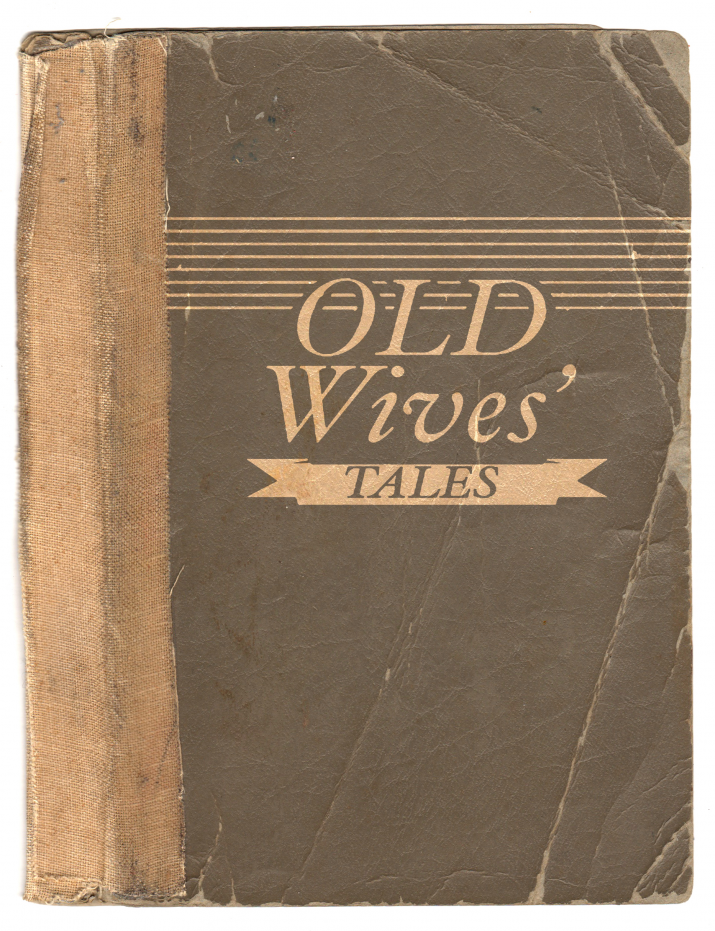How to Spot Myths or Old Wives Tales from a Distance
By SJW
November 28, 2007 • Fact checked by Dumb Little Man

Old Wives Tales are often found in trashy print magazines, in water cooler gossip, in conversations with well meaning friends and even amongst popular online life hacks. Old wives tales have been passing from person to person since way before the idea of “Viral ideas” went viral. They are popular, easy to remember, easy to pass on and they have the intriguing scent of insider knowledge. How can we tell the difference between an old wives tale and good, solid advice?
Here are 9 questions that you can use, to help you spot an Old Wives Tale from a distance:
- Is it likely that anyone would know this information? Think carefully about the details. Is it likely, or even possible, that information like this is known by anyone? There are some things that nobody knows yet.
“The bloggers of today will be the blind people of 2020”
Doesn't this sound factual and authoritative? The problem is that these sorts of messages are only predictions and guesses. To present them as facts is a mistake. But they do play on our fears don't they?
- Is there any way to test or verify it?
“A mother should not leave the house for the first 90 days after giving birth. Otherwise she will be weak for the rest of her days”.
If this is true, where is the proof? It is an impossible theory to prove because it isn't specific enough to test. This is where Old Wives Tales gain popularity. While they are impossible to prove, they can sometimes be difficult to disprove.
- Is the source reliable? Who is telling you this information? Are they likely to know the truth about the subject? More importantly, if they are just passing on information, is their source reliable. A classic old wives tale will start with the phrase, “They say that…”. This is an attempt to sound authoritative without the onerous task of actually being authoritative.
When someone tells you “They say that 60% of businesses fail in their first year and 95% of online businesses don't make it past 6 months” your alarm bells should start to ring. Who are They? Why don't they have a name? Can I contact them or refer to their research to see if their claim is correct?
- Does it match with reality? Sometimes there are opportunities for us to test Old Wives Tales in the real world. This happens when we can compare the claim with what we observe for ourselves.
“If you let a baby cry itself to sleep, it will develop separation anxiety”
Look at a few cases of children that have been allowed to cry themselves to sleep and see how they have developed. If you see examples that have grown up into well adjusted children, then you know the Old Wives Tale isn't as water tight as it sounds. A dozen cases cannot conclusively prove an old wives tale correct, but just one or two might disprove it.
- Is the Premise, the logic and the conclusion sound? What fact or theory is the Old Wives Tale based on? If the starting point is flawed then there is no point in believing the end point. Is the reasoning that joins the premise to the conclusion correct? Is the final conclusion a defensible result of the reasoning? Remember that any of these 3 components can be sound without the whole idea being correct.
- Is it overly simplified? Old Wives Tales are often just a watered down view of reality. Through many iterations and being passed from person to person, the inconvenient irregularity of real world truth has been neatened and abbreviated until it is scarcely useful.
For example if someone tells you that you can form a new habit in 30 days, are they likely to be correct? It sounds believable, and it is definitely popular, but is it always true? In the real world, you have to take into account many other factors. It is more than just turning over a page on your calendar. The 30 days to a new habit is a classic Old Wives Tale because it includes a certain amount of truth but it has been packaged into a popular, but useless generalization.
- Does it account for context? One message may be true in one context, but it may be completely false in another. The worst Old Wives Tales have no reference to context. An unwary listener can try and apply an idea to the wrong context and end up with terrible results.
- Is it simply an opinion passed along as fact? Notice the difference between these 2 sentences.
“I think that starting a corporate blog is the best way to market your business”
“Without a corporate blog your marketing plan will be useless”
Which is opinion and which claims to be fact? It is no surprise which one will get passed along as an Old Wives Tale. We have to be careful to distinguish between opinions and facts.
- Most importantly does it work and even more importantly, is it useful? There is no point in clinging to an Old Wives Tale if it isn't valuable. If it doesn't work or it isn't any use, then forget it. Leave it behind and continue your search.
Old Wives Tales are just one source of misinformation, but I believe that they are one of the most prevalent and dangerous. Practice spotting them from a distance and you will be able to avoid falling for their false wisdom.
Written for Dumb Little Man by Tom O'Leary. Tom is the author of LifeGoalAction, a site designed to help people make the most of their finest asset…their life.


